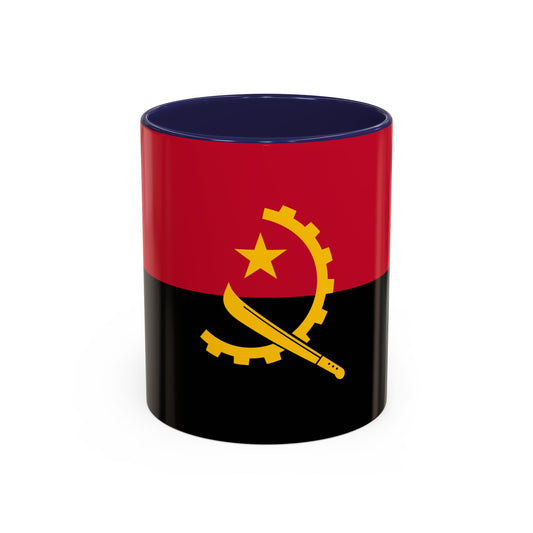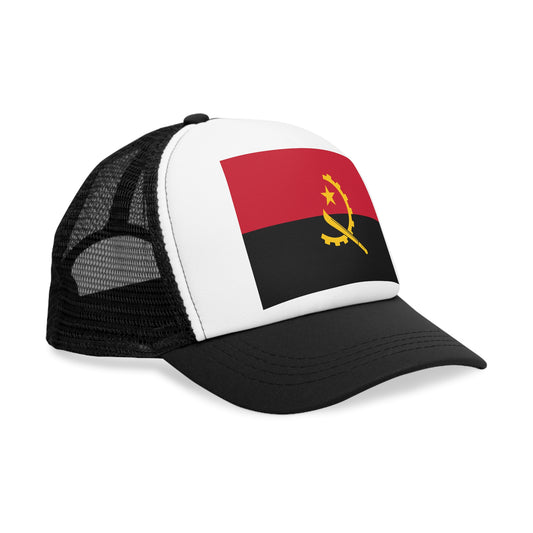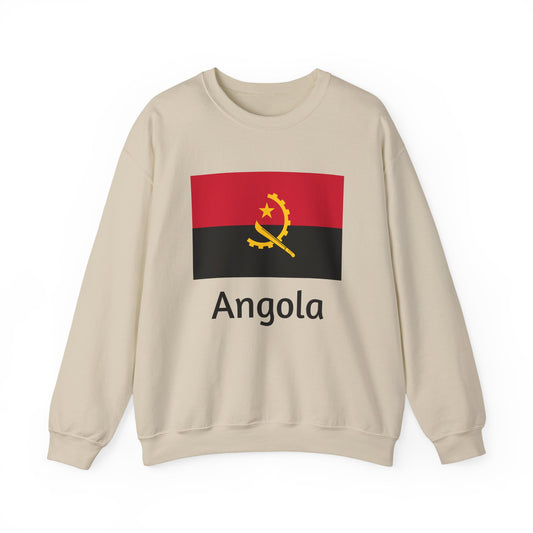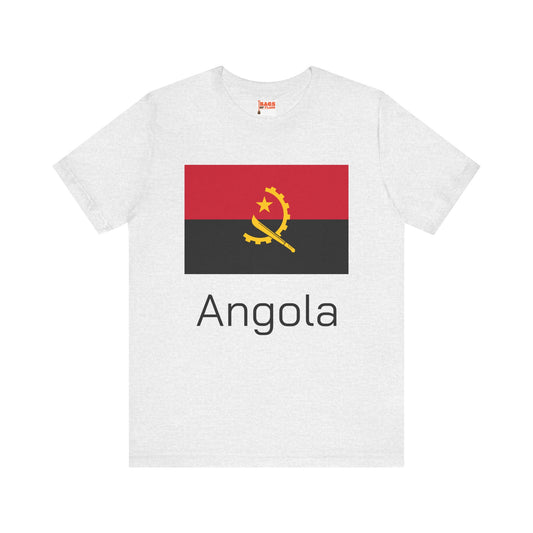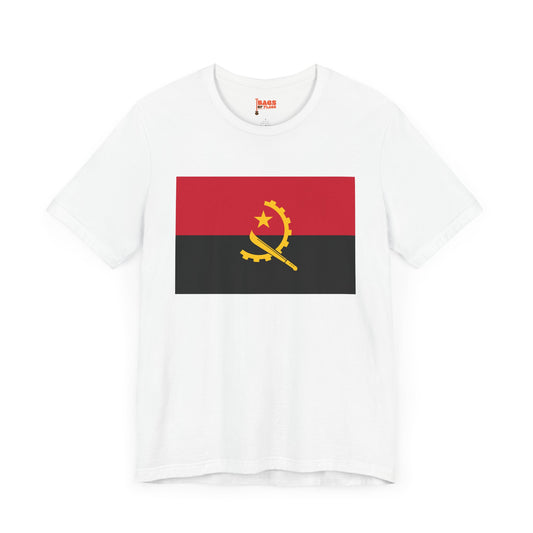-
Angola Pillow
Regular price $22.65 USDRegular priceUnit price / per -
Angola Backpack
Regular price $59.79 USDRegular priceUnit price / per -
Angola Leather Patch Hat
Regular price $18.85 USDRegular priceUnit price / per -
Angola Mug
Regular price $11.65 USDRegular priceUnit price / per -
Angola Trucker Cap
Regular price $14.90 USDRegular priceUnit price / per -
Angola Inspired Sweatshirt
Regular price $34.15 USDRegular priceUnit price / per -
Angola Flag Sweatshirt
Regular price $34.15 USDRegular priceUnit price / per -
Angola Sweatshirt
Regular price $34.15 USDRegular priceUnit price / per -
Angola Inspired Hoodie
Regular price $34.40 USDRegular priceUnit price / per -
Angola Hoodie
Regular price $34.40 USDRegular priceUnit price / per -
Angola T-shirts
Regular price $22.79 USDRegular priceUnit price / per -
Angola Flag on Hoodie
Regular price $34.40 USDRegular priceUnit price / per -
Angola Flag on T-shirt
Regular price $22.79 USDRegular priceUnit price / per -
Angola Inspired T-shirt
Regular price $22.79 USDRegular priceUnit price / per
Collection: Angola
The Angolan flag, also known as the Flag of Angola, holds a rich history and significant symbolism. We will try to offer you a comprehensive guide to the Angolan flag, covering its design, historical context, symbolism, current relevance, and additional fascinating facts.
Overview of the Angolan Flag

The flag of Angola presents a striking visual with its two horizontal bands of red and black, divided evenly across its surface. At the center sits a distinctive emblem in a bright yellow color, which comprises a cogwheel, machete, and a five-pointed star. Each of these elements and colors is rich in meaning and collectively represents the nation’s identity, struggles, and aspirations.
The top red band symbolizes the courage and the bloodshed by Angolans in their fight for independence, while the black band reflects the African continent and its people's resilience. The central emblem, beyond being a nod to the country's natural resources, emphasizes the importance of industrial and agricultural development, alongside the commitment to progress symbolized by the star. This bold design encapsulates the spirit of Angola, portraying a narrative of liberation, unity, and forward momentum.
Historical Context of the Angolan Flag

On the historic day of November 11, 1975, as Angola emerged from the shadows of Portuguese colonial rule, the nation proudly adopted its new flag. This significant event marked not only the birth of an independent Angola but also the culmination of a protracted struggle for sovereignty. The flag's inception was heavily influenced by the emblem of the Popular Movement for the Liberation of Angola (MPLA), which played a central role in the country's path to independence. The MPLA's flag served as a source of inspiration, embodying the aspirations and resilience of a people determined to govern their destiny.
The design of the flag was a deliberate choice, reflecting the principles and values that guided Angola's liberation movement. The flag's adoption was more than a mere formal procedure; it was a declaration of Angola's newfound identity and a testament to the sacrifices made by its people. This pivotal moment was not just about the unfurling of a national symbol but also about planting the seeds of hope for a future defined by unity and progress.
As Angola navigated through its early years of independence, the flag remained a constant symbol of the nation's pride and the enduring spirit of its people. It stands as a reminder of a historical journey marked by adversity, resilience, and the unwavering pursuit of self-determination.
Symbolism Embedded in the Angolan Flag
The emblem at the center of the Angolan flag carries with it a wealth of symbolism that is integral to understanding the nation’s identity and values. The cogwheel that anchors the emblem signifies the importance of industrial advancement as a foundation for the country’s progress. It highlights Angola's commitment to technological and economic development as a path to improving the lives of its citizens.
The machete, a tool used both in agriculture and as a weapon during the struggle for independence, symbolizes the dual nature of work and defense. It acknowledges the role of the agricultural sector in sustaining the nation, as well as the determination and struggle required to achieve and maintain sovereignty. Above all, the five-pointed star casts a light on the guiding principles of freedom and international solidarity. It reflects the aspiration towards socialism and the importance of unity among oppressed peoples across the world in their fight against imperialism and for self-determination. Together, these symbols encapsulate the journey of a nation through adversity towards self-reliance, peace, and prosperity.
Current Relevance of the Angolan Flag
In today's Angola, the national flag is more than just a ceremonial emblem. It can be seen flying high at various significant events across the nation, from official state functions and military parades to cultural festivals and sports competitions, symbolizing a unified national identity. The flag’s presence in government establishments and educational institutions underscores its role in instilling a sense of patriotism and belonging among Angolans. Discussions surrounding the flag have evolved, reflecting the country's changing socio-political landscape. Debates often focus on the flag's historical implications, particularly how its symbolism aligns with contemporary values and aspirations of Angola's diverse population.
These discussions have sparked a broader conversation about national identity, heritage, and the future direction of the country. Amidst this, there have been calls for the flag to continue representing the collective hope and resilience of the Angolan people, ensuring its relevance in a modern context. The flag also plays a critical role in international settings, where it represents Angola at global forums, sports events, and diplomatic missions, projecting the country’s sovereignty and the unity of its people on the world stage. This enduring symbol, therefore, remains a powerful beacon of Angola’s past achievements, current realities, and future possibilities, connecting Angolans at home and abroad.
Additional Facts and Protocols for the Angolan Flag
Regarding the protocols associated with the Angolan flag, it's crucial to understand and respect the guidelines set for its display. When raising the flag, it is paramount to ensure the red band is positioned at the top - a reversal in this order is considered incorrect and disrespectful. The flag is to be treated with the utmost respect, reflecting the dignity and values it represents. During national holidays, official events, and at international forums where Angola is represented, the flag is displayed prominently, often alongside other national symbols, to underscore the unity and pride of the Angolan people.
An intriguing aspect of the Angolan flag is its inclusion of a cogwheel in its design, a unique feature that sets it apart from many other national flags. This cogwheel, beyond its symbolic representation of industry and progress, underscores Angola's commitment to economic development and modernization. Such distinct elements highlight the thoughtfulness imbued in the flag's design, reflecting the country's complex history and aspirations for the future.
In the context of flag etiquette, the Angolan flag must not touch the ground or be used for purely decorative purposes in a manner that compromises its dignity. When displayed with other flags, it should be accorded a place of honor. These protocols ensure that the flag continues to be a revered symbol of national pride and heritage.








